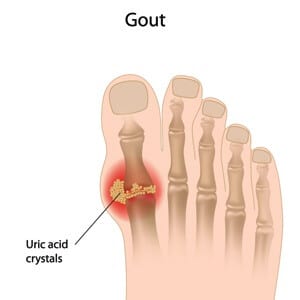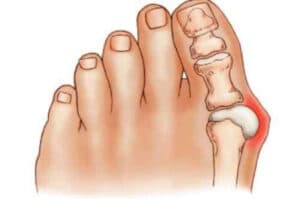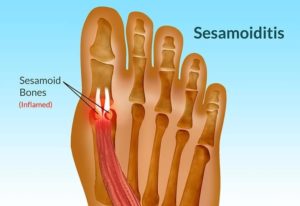Pain in the big toe ends up being a much more frequent problem than is believed. It can affect young people as adults alike and its causes are diverse.
This pain happens when the blood vessels of the toes narrow and we can suffer a somewhat sharp and sudden pain. It can be momentary or lengthen in time. For any pain that is not normal, it is best to see a doctor or physiotherapist.
Causes of Pain in the Big Toe
The most important causes are having gout or high uric acid. But there are more causes, because we can feel pain when suffering from Raynaud’s syndrome, emotional stress, for important atmospheric causes, especially when it is cold, for having injuries or fractures, because of inflammatory arthritis of non-gouty origin, sprains, or having osteochondritis, a fracture of the cartilage. While we can also suffer from sesamoiditis, another condition in which pain occurs while walking.
- Gout is a metabolic pathology that affects the big toe. And it usually takes place when uric acid builds up in the blood. Upon crystallization they deposit in the joints and cause pain in the big toe. The pain at the time of suffering gout or gouty arthritis is usually acute and cause not only pain but also swelling of the big toe, redness and discomfort. This general pain is usually quite uncomfortable and requires rapid treatment.

- Bunion is also another cause of this pain in the finger. It is usually an inflammation that causes a change in the position of the finger. The symptoms are pain, red color, and a little redness.

- Fractures. One of the most important pains occurs when there is a fracture of the big toe due to various causes. In addition to severe pain, swelling, bruising and stiffness usually occur. In addition to suffering displacement. In this case, the traumatologist will determine which remedies to apply according to the lesion, which happen to have the toe and part of the foot plastered or to perform an operation with surgery so that everything returns to normal.
- Big toe tendonitis. It is the inflammation of a tendon, the fibrous structure that joins the muscle with the bone. They usually occur due to overuse of the tendons.
It often becomes a chronic pathology that has a high rate of recidivism and causes pain and increased sensitivity around the joints.

Big Toe Pain at Night: Gout
A gout attack can occur suddenly and can often make you wake up in the middle of the night with the feeling that the big toe is on fire. The affected joint is hot, swollen and so sensitive that even the weight of the sheet may seem intolerable.
Gout symptoms can be intermittent, but there are ways to control them and prevent exacerbations.
- Intense joint pain. Usually, causes pain in the joint of the big toe. Other joints that are frequently affected are the ankles, knees, elbows, wrists and fingers. The pain is likely to be more severe within the first 4 to 12 hours after it begins.
- Persistent discomfort. After the most intense pain disappears, it is possible that some joint discomfort remains, which may last a few days or weeks. Later attacks are likely to last longer and affect more joints.
- Inflammation and redness. Affected joints swell, become sensitive, get hot and red.
- Limited range of motion. As the gout progresses, you may not be able to move the joints normally.
Pain between Big Toe and Second Toe: Capsulitis
In general, it is believed that the capsulitis of the second toe is the result of abnormal foot mechanics, in which the anterior part of the sole of the foot, under the toe joint, receives an excessive amount of pressure.
Certain conditions or characteristics may make a person prone to experience excessive pressure on the front of the sole. Among the most common are having a severe deformity of the bunion, the second finger longer than the big toe, an arch that is structurally unstable and the tense calf muscle.
Symptoms: As capsulitis of the second finger is a progressive codition and generally worsens if left untreated, its early recognition and treatment are important. In the earliest stages — the best time to seek treatment — symptoms may include:
- Pain, particularly in the anterior part of the sole of the foot. It may feel as if there is a stone in the shoe or as if the stocking was made a bun.
- Swelling in the area of pain, including the base of the finger.
- Difficulty wearing shoes.
- Pain when walking barefoot.
